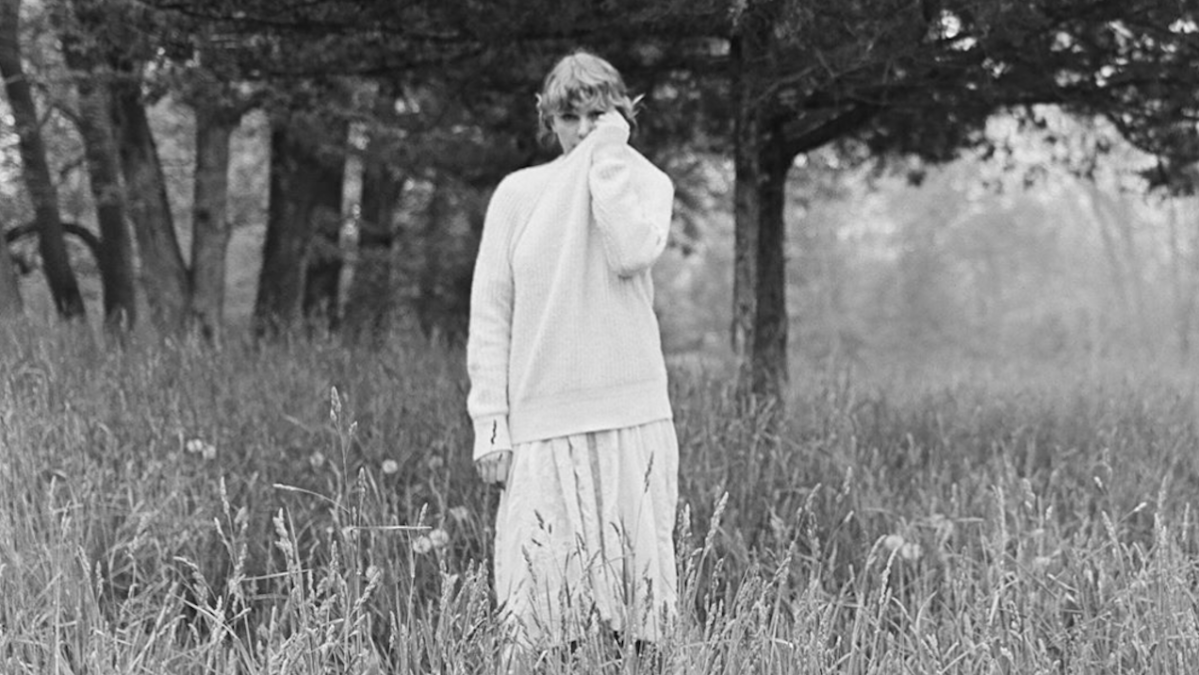
Strawberry shortcake. Dappled sunlight through lace curtains. Endless yearning. TikTok. Toadstools. Taylor Swift?
Just hours after revealing the surprise release of her eighth studio album, folklore, pop megastar Taylor Swift has been proclaimed the new standard bearer of cottagecore, the throwback aesthetic blooming all across the For You Page.
While the album is not yet a day old, all moss-covered signs point to this being Swift’s pivot to the cottagecore lifestyle. But what is cottagecore, exactly, and why are Swift’s true believers claiming this as a win for its adherents?
Cannot believe Taylor Swift is gonna gift us with a cottagecore album, wow wow wow. pic.twitter.com/tcOW58trwO
— Rachel Hawkins/Erin Sterling (@LadyHawkins) July 23, 2020
Simply put, cottagecore is a vein of social media content which focuses primarily on cosy but antiquated fashions, food, and handiwork. Genre tropes include close-up baking videos, lilting voiceovers, and sumptuous journeys through various fens, glens, and gardens. It’s gorgeous, fairytale stuff.
@hereatthecottageThe Wind in the Willows ##cottagecore ##grandmacore ##farmcore ##aesthetic ##fyp ##foryou ##country ##cottage ##nature ##garden ##green ##walk ##wood ##memories♬ Father and Son – Cat Stevens
@poetryofbeautyRainy days were made for putting back on your nightgown & eating muffins – ##Cottagecore ##calm ##cottagecorebaking ##cottagecoreaesthetic ##slowdays♬ original sound – pattibroussard
@twin.nwininspired by uncle irohs tea shop ##fyp ##strawberry ##cottagecore ##avatar ##farmcore ##tea ##farmcore ##baking ##atla♬ original sound – shy_labeef
The feeling cottagecore videos emulates is not entirely dissimilar to the Danish concept of ‘hygge’, that specific sense of homeyness and belonging. But while ‘hygge’ is recreated in slow TV specials of Christmas fireplaces, the cottagecore aesthetic has taken root on the short video platform TikTok, where clips tagged #cottagecore have been viewed some 2.7 billion times.
The first promotional shots for folklore could have been plucked from any of those videos, and fans were quick to link press imagery of Swift roaming through the woods to the cottagecore life. Swift’s post about her folklore collaborators, including The National‘s Aaron Dessner and Bon Iver mastermind Justin Vernon, further convinced Swifties of folklore’s capacity for well, folksiness. Then there’s the existence of track two, cardigan, which opens with “Vintage tee / brand new phone / high heels on / cobblestones,” a line which bridges cottagecore’s rustic appeal with its all-too-modern prevalence.
Though cottagecore content often highlights the domestic labour of decades past, the distinction between ‘recreating’ and ‘repurposing’ feels important. The genre is primarily the reserve of young women. Men, for the most part, are a conspicuous absence in the platform’s top posts. It’s all little bit ‘when will my husband return from the war?’, but the ‘husband’ rarely seems to exist, and everyone is just fine with that; if anything, cottagecore feels like a display of feminine self-sufficiency, a rejection of the hardened gender roles encoded in all of that pastry-rolling and petal-plucking.
In a March, The New York Times‘ Isabel Slone highlighted the queer and lesbian content creators who create much of the genre’s best work, teasing the distinction between cottagecore and the blazing white expanse of conservative “mommy bloggers” who might appear to occupy a similar homey niche.
“Queer people are also so heavily objectified and sexualized in media, and this is something where we can just be ourselves,” said Nancee Craft, a cottagecore poster.
At time of writing, videos under the hashtag #cottagecorelesbian have been viewed more than 22 million times.
@idiotgingerlesbianI rly want this ???? ##cottagecore ##forestcore ##wlw ##cottagecorelesbian ##fairies ##dreamlife ##lesbian♬ original sound – ogpeachykeen
Ties between this queer vision of cottagecore, and the early aesthetics of Swift’s new record, did not go unnoticed.
https://twitter.com/4evrmalone/status/1286302675588481026
a damp forest? cardigans?? FOLKLORE??? sorry but this is THE lesbian album. woods dykes—good morning
— Jill Gutowitz (@jillboard) July 23, 2020
folklore is for the cottagecore lesbians or it is for no one at all i REPEAT
— MUNA (@whereisMUNA) July 23, 2020
Fan speculation about Swift’s sexuality may have peaked around the release of her 2019 single, You Need To Calm Down, which saw the singer condemn homophobes and anyone who dares dim the “sunshine on the street at the parade.” After that song’s release, Swift told Vogue, “I didn’t realise until recently that I could advocate for a community that I’m not a part of.”
So, there’s that. But it is not hard to see why fans would wish for Swift to live that cosy cottagecore life, a life unencumbered by men, men who grope and men who lord over master recordings, men who break into homes and men whose foster tabloid feuds.
Claims of inauthenticity have been used against Swift’s career since day dot, and many of the same arguments can be fashioned against cottagecore itself: both show young women carving worlds out for themselves. I struggle to imagine Swift’s folklore collaborator Justin Vernon facing the same complaints if he wrote his breakout album, For Emma, Forever Ago, in 2020. For that record, Vernon hoofed it to his dad’s remote hunting cabin in Wisconsin, piecing together his classic in self-exile, like a modern-day Henry David Thoreau.
Even then, Thoreau, the pioneering cabin-camper who documented his escape to the wild in Walden and was lionised for the effort, was never that far away from creature comforts. He often made the trip back to the family home, where he would eat biscuits, baked by his mother.
If you want to talk about cottagecore, and, more broadly, authenticity, mull this one over: it hasn’t even been out for a day, but critics already believe folklore is one of Swift’s most honest records yet.



